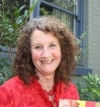Stephanie Owen Reeder
Dr Stephanie Owen Reeder is a Canberra-based author, illustrator, editor and award-winning reviewer who has been reviewing children’s books for nearly thirty years. She has also worked as a secondary school teacher, a librarian, a university lecturer and a Hansard editor at Federal Parliament. Stephanie co-edited The Inside Story: Creating Children’s Books (1987) and was the editor of the Children’s Book Council of Australia’s journal Reading Time. Her historical novel Lost! A True Tale from the Bush (2009) was shortlisted in the CBCA Children’s Book of the Year Awards in 2010, while Amazing Grace: An Adventure at Sea (2011) won the New South Wales Premier’s History Award in 2012. Her picture book I’ve Got a Feeling! (2010) was an International Board on Books for Young People Outstanding Book in 2011. Her latest book for children is Dance Like a Pirate (2013).

